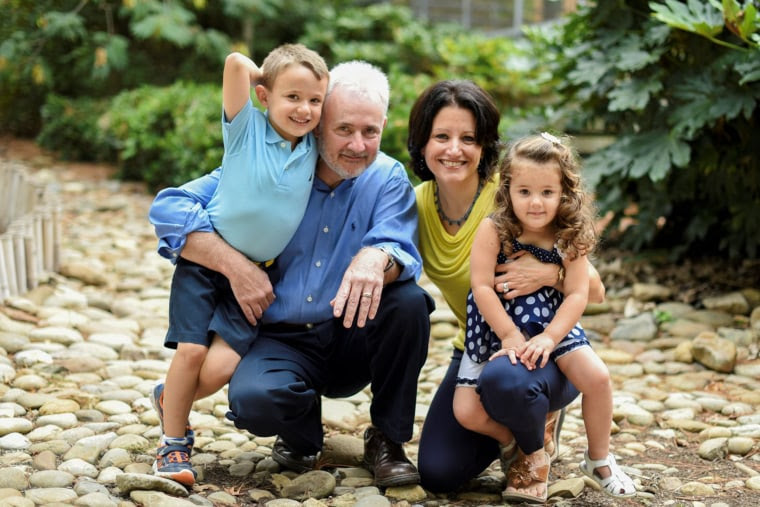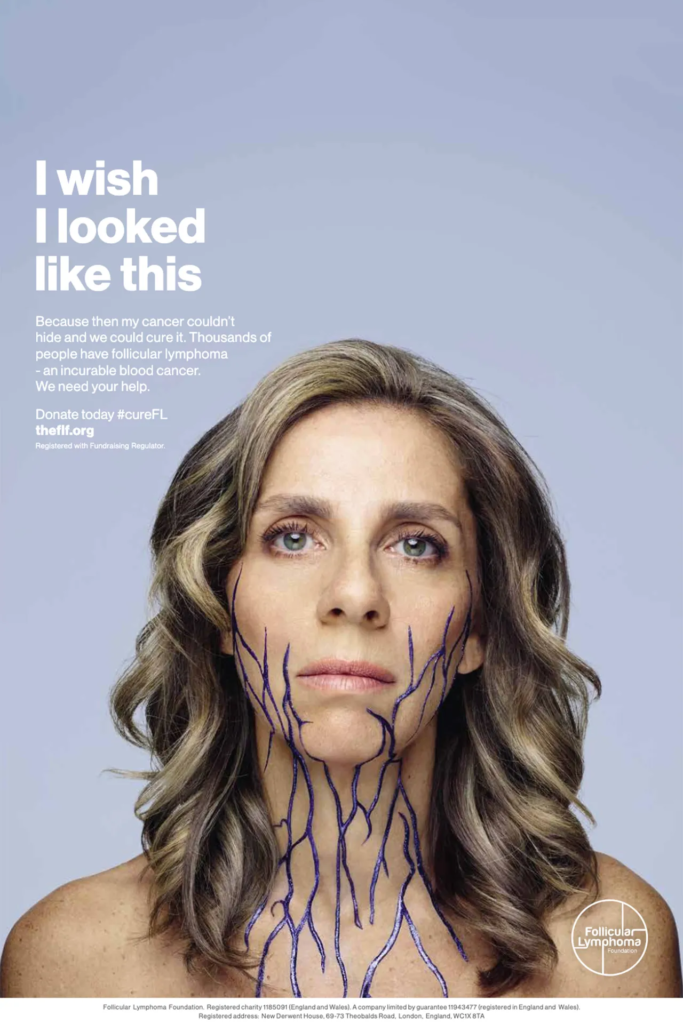
Nicole Bell is a mom and successful entrepreneur who has advanced her professional career as an engineer and program manager. She became an executive in a fast-growing medical device company, where she built a world-class team in surgical robotics. But in 2017, Nicole’s husband was diagnosed with a devastating disease, and she was forced into her most challenging roles yet: caregiver and medical proxy. Unsatisfied with the doctors’ answers, Nicole set out on a journey using her engineering mindset to search for the root causes of her husband’s illness. She eventually found them and sought treatment—a process that changed her and her entire view of modern medicine.
About the Author — Nicole Danielle Bell
Nicole grew up near Boston and earned a Bachelor’s and Master’s of Science in Materials Science and Engineering from MIT and a Master’s of Science in Biomedical Engineering from Duke University. She currently lives near Raleigh, North Carolina, with her two children and dogs.
My story started with a tick bite. How I lost my husband to undiagnosed Lyme disease
When my husband’s cognitive abilities began to decline, doctors thought he had early onset Alzheimer’s. We later learned he had multiple tick-borne infections.
June 1, 2022, 10:01 AM EDT / Updated June 5, 2023.
By Nicole Bell, as told to Genevieve Brown – Search (bing.com)
It was 2016 when I got a call at work. It was the house alarm company. My husband, Russ, who picked up the kids from school each day, had arrived home and wasn’t able to turn the blaring alarm off. I got home later that day and everything was fine.
But I noticed Russ asking repetitive questions. Forgetting what time to pick up the kids. And he couldn’t remember the alarm code — the same one we had used for years.
In the time leading up to the alarm company incident, things between Russ and me had not been good. He was moody and irritable. He was angry. I thought we were headed toward divorce. But now I know those were the very first signs of tick-borne illness.
Bell describes her late husband as “outdoorsy,” and said she immediately thought of ticks when his mental abilities began to suffer. But when bloodwork showed up normal and a doctor misdiagnosed him with Alzheimer’s, tick-borne illnesses fell off her radar.
Because Russ was very outdoorsy, and because I knew he had ticks on him over the years, Lyme disease was actually one of the first things that came to mind when I started looking into the symptoms of my husband’s cognitive decline. The thing was, though, that Russ had never had a fever or a rash associated with ticks that we knew of, and when tested with the standard Lyme screener had come up negative.
We also got bloodwork from an integrative medicine doctor to take a deeper look at what was happening with Russ. It showed nothing out of the ordinary. Tick-borne illnesses, like Lyme, fell off my radar. Russ went to a neurologist for cognitive testing and his decline was far worse than I even suspected. He wasn’t able to do simple math patterns that my 6-year-old could easily do at the time. He was a computer scientist and electrical engineer.
I was flabbergasted. The neurologist said he either had a stroke event or Alzheimer’s.
An MRI showed no stroke event.
A PET scan showed severe deficiencies in metabolism patterns, consistent with late-stage Alzheimer’s. He was 60. Early onset Alzheimer’s, however, is not typically a quick decline without a genetic component, which Russ didn’t have. In Russ’ case, though, the decline was swift. But after about nine months, I accepted the diagnosis.
That is, until I spoke to my brother, Scott, whose wife had been suffering from chronic illness for years and also had just been diagnosed with multiple tick-borne illnesses.
Scott told me, “I think this is what’s going on with Russ.”
Russ was tested with a PCR test, the same way we now test for COVID-19, which looked
for the organism itself rather than the antibodies. Russ had three tick-borne infections —
the three Bs as they’re known — Borrelia (otherwise known as Lyme disease), Bartonella
and Babesia.
(Editor’s note: While Bell does not know which tick-borne infection caused the illness resembling Alzheimer’s, Elizabeth Landsverk, M.D., who specializes in the treatment of dementia and Alzheimer’s, told TODAY that untreated Lyme disease can cause brain fog and neurological symptoms that mirror the symptoms of Alzheimer’s, as well as “toxic scarring to the brain.”)
We had wasted 15 months. Still, there was hope.
Infections, at least, can be treated. So that’s what we did. And the next year can only be described as a roller coaster. Antibiotics would help, and then Russ would come off them and decline. Some of the more well-known symptoms of Lyme came up — joint pain, swelling in his knees. But cognitively, he continued to decline.
After 18 months of treatment, I made the most difficult decision of my life —
to move Russ to a respite care facility. It was three years ago this month.
For a time, Russ was OK. He had socialization I couldn’t provide at home.
He was receiving good medical care.
I visited him almost every day and helped with showering and things of that nature.
It went on that way until March 2020. Then COVID hit, and I couldn’t see Russ for six months.
“The man who had once been so engaging — the life of the party — was vacant,” Bell said of her late husband. “The man who had once been so engaging — the life of the party — was vacant,” Bell said of her late husband. I finally did see him because he was moved to a hospital because of a seizure.
It was September of 2020. He had lost so much weight. He was hunched over. The man who had once been so engaging — the life of the party — was vacant. People asked if I thought he recognized me. I didn’t think so. Russ passed away in January of 2022.
Throughout this journey, I journaled. I had lost my partner, the person I communicated with every day. Journaling my experiences was an outlet. It was during 2020 that I wrote my memoir, “What Lurks in the Woods.” It was published on Oct. 23, 2021 — Russ’s 65th birthday. I wanted to honor his life, but also to raise awareness for tick-borne illnesses. They don’t always present in a typical manner, and if you or a loved one is experiencing sudden mood changes, anxiety or depression, I encourage you to find a Lyme-literate doctor through the database of the International Lyme and Associated Diseases Society (ILADS). I wish I had done that sooner.
This interview has been edited and condensed.
Episode 216: What Lurks in the Woods – an interview with Nicole Bell – Tick Boot Camp
Can you briefly summarize your husband’s experience with Lyme disease & Alzheimer’s?
Russ’s first symptoms were personality changes. He became moody, irritable, and sometimes outright nasty. He’d retired early to be “Mr. Mom” to our two young children, so I rationalized it as unhappiness with that choice. We went to therapy, but it didn’t help, and I thought divorce was imminent. Then in 2016, I realized his memory was failing.
He forgot simple things, like the code to our house alarm and the time to pick up the kids. After a series of doctors, he was diagnosed with late-stage early-onset Alzheimer’s disease. We were just figuring out something was wrong, but his disease was deeply entrenched.
How many doctors did you have to see,
and how long did it take to get an accurate Lyme diagnosis?
Like most Lyme patients, it was a journey. We started with an integrative practitioner,
who tested him for various causes, including Lyme. But Russ tested negative for Lyme
on a Western Blot, and all of his other lab work was “normal.” The doctor referred us
to a neurologist, and that’s when Russ was diagnosed with early-onset Alzheimer’s.
But the diagnosis never made sense to us because Russ had no genetic predisposition or comorbidities. We went to four different neurologists, searching for alternate answers.
We got nothing. One of them told me, “Shit Happens,” when I begged for an explanation.
I still cringe at that moment. Ironically, the doctor who figured it out was my brother.
He encouraged me to get Russ tested with a lab specializing in Lyme instead of the CDC-recommended Western Blot. That’s when we finally got our answers. Russ tested positive for the three B’s—Borrelia, Bartonella, and Babesia, the bacteria causing Lyme disease and two common co-infections. But over 15 months had passed, we had wasted critical time.
.jpg?width=360&name=Russ-Nicole-Pre-Wedding-Dinner%20(3).jpg)
What made your brother suspicious that it was Lyme disease?
Well, his wife had suffered from health issues for years. They finally figured out she
was battling Lyme and several coinfections, and he started researching the conditions.
He found research papers linking Lyme to Alzheimer’s and instinctively knew it was the cause of Russ’s decline.
Lyme was my first thought when I realized Russ was sick. Russ was a hunter and was always in the woods. I pulled dozens of ticks off him over the years, but he never had the tell-tale fever and rash. Still, we suspected tick-borne illness as a cause, and I asked that very first doctor to test him. But his Western Blot came back negative, and we went in search of other answers.
You desperately searched for answers regarding your husband’s diagnosis.
You also faced many doctors who brushed you off. What have you learned from this,
and how should others speak up for themselves in similar situations?
I believe patients need to be their own advocates. If a doctor isn’t genuinely interested in uncovering the root causes of your illness, then get another doctor. We wasted over a year with neurologists who chastised me for digging deeper. I wish we’d spent that time with a functional practitioner committed to finding causes rather than treating symptoms.
What would you like doctors to know?
As for doctors, I would want them to know two things. First, the standard CDC test for Lyme is grossly inadequate. A study in 2020 demonstrated that it is only 29% accurate.
I can’t think of any other disease where this type of performance would be deemed acceptable and “the gold standard.” Second, ticks carry so much more than Lyme.
There are dozens of bacteria, viruses, and parasites that ticks transmit. Doctors need to educate themselves and consider these tick-borne illnesses when diagnosing patients.
Tell us about your new book! What made you speak out and share your story?
The book started as something for my family and me. I began journaling to cope with the craziness that chronic illness brings. The more I wrote, the more I realized that processing our journey through writing was helping me heal. Along the way, writing took on a more significant meaning, and I knew that our story could also help others.

How about those without?
What can others with Lyme & chronic illness hope to get out of reading about it?
I think people suffering from tick-borne illness will connect with the rollercoaster of suffering from a disease that many believe doesn’t exist. I’m an engineer, and I came to the space open-minded and craving facts. I used that scientific mindset to show how broken our medical system is but in a real-life, engaging way.
But honestly, for those suffering from Lyme, the book’s best use may not be for them—it may be for the people around them. Our story can engender support by letting their loved ones walk the life of tick-borne illness. Many folks outside the Lyme world have said our story opened their eyes. And I now know people who got tested because of the book and tested positive. While I’m not happy they have tick-borne diseases, I’m glad our story helped them get answers.
When and where can we buy it?
It is available on Amazon and Barnes and Noble in paperback and eBook.
https://www.amazon.com/What-Lurks-Woods-Struggle-Chronic/dp/1955711011/
https://www.barnesandnoble.com/w/what-lurks-in-the-woods-nicole-bell/1140009487
What did Russ’s treatment protocol look like?
We were treated with broad-spectrum oral and IV antibiotics for over six months.
We then transitioned to a more targeted set of antibiotics, including newer therapies such as Dapsone. All the while, he was on supplements and herbs to support his immune system, detoxify, and restore much-needed vitamins and minerals.
Unfortunately, despite working with well-respected Lyme doctors, we couldn’t reverse
the course of his disease. In May of 2019, I couldn’t care for him at home any longer and placed him in a residential care facility. His decline continued, and he passed away from his illness on January 14, 2022. The journey has been heartbreaking and has left our two kids, ages 8 and 11, without their dad.

How did your family and friends act during this time?
In the beginning, we isolated ourselves. Dementia is challenging to live with, particularly when afflicted so young. Russ didn’t want people to see his decline, and his mood swings were so intense that I didn’t think I could get help from others. Not reaching out to friends and family for assistance was one of my biggest mistakes.
Since I’ve opened up about our experience, friends and family have been a fantastic support network for me. We’ve developed a loving tribe for which we are immensely grateful.
What if any recommendation do you have for convincing the NIH, CDC, and IDSA that Lyme and tick-borne diseases are chronic and constitute a major, growing epidemic in the United States?
I’ve worked in medical devices for the past 15 years, and a common expression at the FDA is, “In God we trust, all others must bring data.” I think data is the key. We need to support organizations like GLA that fund critical research initiatives in Lyme and other tick-borne diseases. In the end, science will win. Research has shown and will continue to show that tick-borne pathogens are at the root of many chronic illnesses. As this scientific evidence mounts, NIH, CDC, and ISDA will change their position. I’m so thankful for GLA and the work you do to get us there.
What do you wish you had known when you first started?
How would you encourage patients embarking upon their Lyme journey?
I tell people that they need to own their wellness journey. I know this sounds intimidating because most of us aren’t doctors or experts in disease. But you don’t need to be an expert in medicine or even a tick-borne illness; you only need to be an expert in yourself.
You know when you feel good or bad, and it’s up to you to communicate it.
Watch how you respond to treatment.
Keep a symptoms journal. Summarize everything you notice in a way the doctor can understand. If you have the right doctor, they will partner with you to find the roots of your disease and restore your health.
The other thing I would say is don’t ignore symptoms. We wasted precious time rationalizing the early changes in Russ. If we’d dug in sooner and demanded answers,
I think Russ would still be with us. I hope others can learn from our journey so that their story ends differently.
***
A note from GLA:
It is critical that we share our heroic accounts with this disease,
both good and bad. Like a growing chorus, accounts like Russ’s will tip the scales.
Lyme has claimed innumerable victims, but as we continue to share our voices,
we can ensure that their legacies are not in vain and pave the way for answers.
Our hope is that Russ’s story is a call to action and underlines why GLA’s work is so necessary. On behalf of Russ, it is our great task to continue his fight by conquering Lyme disease, once and for all. In consideration of Russ’s story, we would direct you
or anyone you know experiencing symptoms to find an LLMD as early as possible.
Visit the GLA referral program for assistance.
Bite Me: How Lyme Disease Stole My Childhood, Made Me Crazy, and Almost Killed Me: Hilfiger, Ally, Hilfiger, Tommy: 9781455567058: Amazon.com: Books
Bitten: The Secret History of Lyme Disease and Biological Weapons by Kris Newby, Paperback | Barnes & Noble® (barnesandnoble.com)
Lyme disease patients fight for their lives while academics fight each other. That’s just wrong. (nbcnews.com)
10 “Everyday” Habits That Are Slowly Killing You. Are You Doing Something About Them? (msn.com)
Dr. Steven Phillips, MD and co-author of the best-selling book, Chronic – Bing video
Search Results for Lyme Disease | Cancer Quick Facts (solitarius.org)
These Small Life Changes Could Help You Live to 100 (msn.com)
Dr Alan MacDonald speaks about Lyme disease – Bing video
Dr Alan MacDonald Lyme – Bing video







































 you’re a fanatic.”
you’re a fanatic.”



 Its a POWER GRAB based on a LIE
Its a POWER GRAB based on a LIE
 Stop the Climate Scam. Climate Scam Inc:
Stop the Climate Scam. Climate Scam Inc: .
.